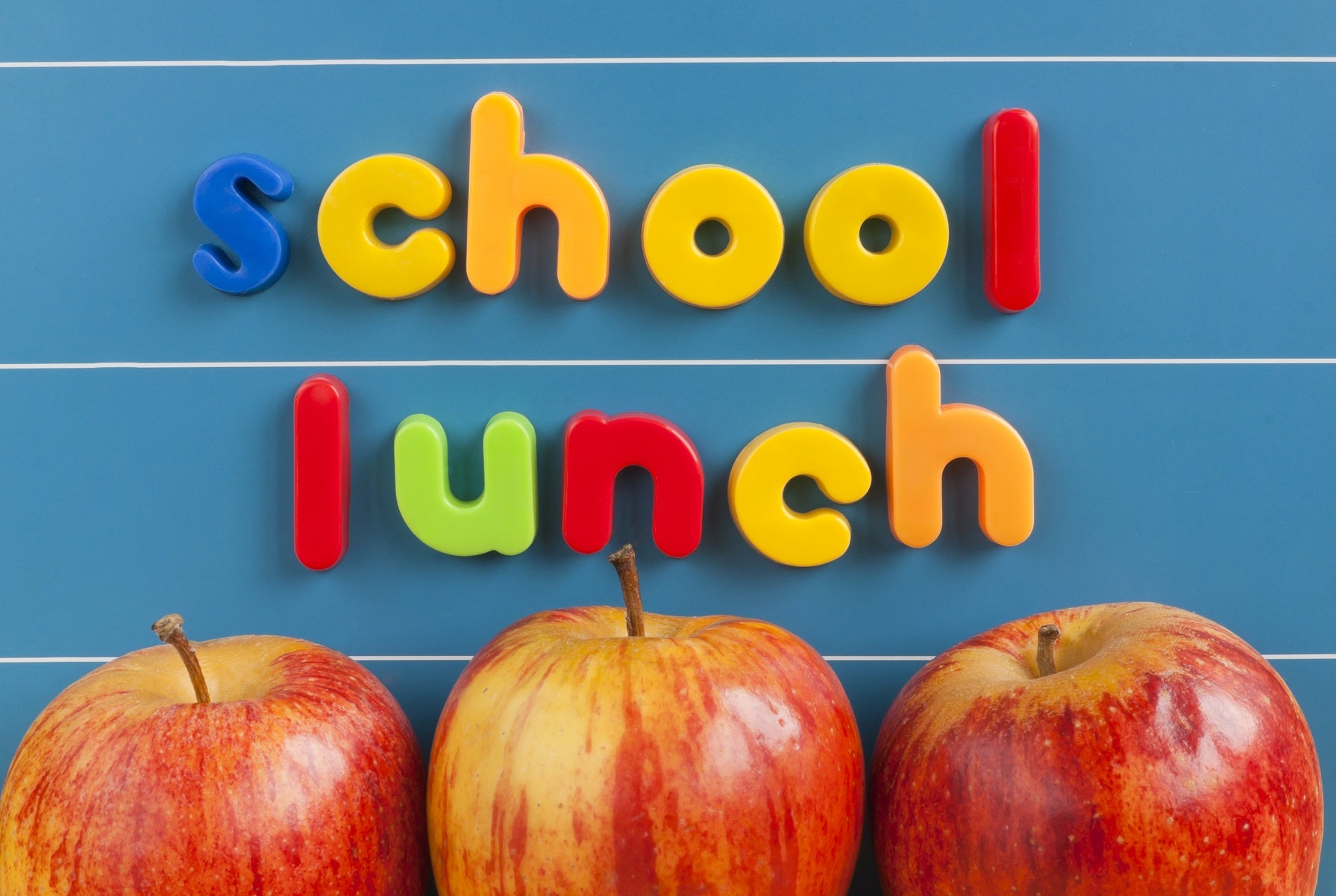When you’re on the go and juggling a busy school schedule (either as a student or parent), it often becomes a step-by-step process. You complete each task as it comes because going in chronological order is the easiest form of prioritization. Thus, it can be easy for things to slip through the cracks. And, with deadlines on the horizon and finals coming up, the last thing you’re likely to think about is packing a healthy lunch.
But those desperate times of flicking a processed, pre-packed meal in the cart are long gone with the help of this healthy school lunch shopping list. Shop healthier, and each lunch will inevitably be more nutritious.
We’ll take you aisle-by-aisle and improve your overall well-being in the process!
Baked Goods
Sandwiches, toast and wraps. Bread and baked goods are among the essentials of a nutritious lunch. In a way, they’re unavoidable, but that doesn’t mean that all bakery items are created equal.
To keep health in mind, select the items that are whole wheat or contain whole wheat grain. Whole wheat has a higher fiber concentration and less calories. Easily pack these items up in a reusable snack bag and send your little one off to school!
Beverages
While juice is a staple, look at the label and make sure that it’s 100% fruit juice and not a fruit “drink.” If you can, consider adding fruit juice to sparkling water for a healthier drink. For orange juice, find a calcium-fortified option.
Since the main concern of beverages is the amount of sugar they contain, try unsweetened teas, coconut water, unsweetened regular or plant-based milk, naturally-flavored water or simply sparkling water.
Canned Foods
Always be on the lookout for sodium and sugar in packaged foods. Check for low-sodium options, as well as canned fruit that’s in juice and not syrup.
Quality and nutritious canned foods are a great option when you’re looking for healthy lunches for school! Keep an eye out for:
- Diced green chilies
- Whole or diced peeled tomatoes
- Black, garbanzo, kidney or soybeans
- Split peas, chickpeas or lentils
Any of the previously listed canned goods can be added to either soups or salads for an extra flavor profile. Consider adding beans or chickpeas to homemade rice bowls for a delicious complement!
Should Canned Be Banned?
Wait a minute. What is canned food doing on a list of healthy food options? Let’s discuss why they have a place in you or your kids’ diet.
Produce is picked and packed at its peak freshness, providing an equal amount of nutrients as fresh frozen fruit and vegetables. The canning process actually aids in preserving nutrients and can increase antioxidant content (through the heat). So, canned produce remains a convenient and affordable option that shouldn’t be ruled out just yet.
With that being said, remember to select and use your goods mindfully:
Condiments and Sauces
While these can be flavorful, they can also be full of sugar and sodium. Be cautious of just how much is in your preferred condiments.
These flavor-boosters are typically healthier options:
- Extra virgin olive oil, canola oil, nonfat cooking spray
- Salsa
- Tomato sauce
- Red wine vinegar
- Mustard
- Barbecue sauce
- Hot pepper sauce
- Capers and olives in jars
Stay keen to healthier substitutes. For example, choose light mayonnaise instead of regular. These little changes make a world of difference.
Dairy Products and Eggs
The best choices will be skim, low-fat or fat-free products, whether you’re grabbing string cheese, yogurt or milk. Employ the following tips for healthier dairy consumption practices:
Pro Tip: Pick a goat or parmesan cheese.
Eggs are also a versatile lunchbox friend. A simple lunch addition is a hard-boiled egg or two. Or, if you have some more time, use hard-boiled eggs to make egg salad (which you can eat in a sandwich or with crackers). Moreover, kids love breakfast for lunch, so you can also make an egg sandwich or bake mini quiches!
Pasta and Grains
As with baked goods, go for whole grain or whole wheat pasta. And instead of white rice, opt for brown rice. Pasta is a pantry-must have. It’s inexpensive, but can make a large number of servings, lasting for several meals.
Pasta doesn’t need to be excluded from our healthy school lunch shopping list!
Produce
Of course, the first thing that comes to mind when packing a healthy school lunch is fruit and vegetables. Thus, here are some tips when purchasing produce:
- Buy locally-grown.
- Buy what’s in season.
- Colorful produce has the most nutrients.
But what are the best options specifically?
Frozen peas, corn, and vegetables are also excellent to keep on hand. Since they’re incredibly versatile, you can chuck a handful into various meals to add nutritional value.
And, quick tip: cutting produce into fun shapes or throwing them on skewers can help your fussy eater clean out their lunch box.
Organic: Is it Worth it or Not?
It’s more expensive, so it’s better for us, right? Well, these are the facts:
Overall, there isn’t a sufficient amount of research today to support that organic food is proven to be better for your health. Although organic farming practices may be better for the environment, if you can’t afford the higher price tag of organic produce, then conventionally grown is a fine option.
No matter what, be sure to wash your fruit under running water before consumption.
Proteins
A central component of most meals, protein is vital to maintaining your or your kids’ overall health. Point being: we all need our protein!
Meat
Lunch meats are a lifesaver. You can roll them with cheese or put them in a typical sandwich or wrap. When picking out your lunch meat, however, avoid sodium dense products.
Turkey and roast beef are great options.
If you’re buying raw meats to cook, try to select ones that have less marbling or come skinless. Rather than ground beef, for example, purchase the leaner options of ground turkey or chicken.
Additionally, tofu is a fantastic substitute for meat. The soy-based alternative is packed with protein and goes well with teriyaki sauce and brown rice.
Seafood
Higher in omega-3 fatty acids, seafood is a heart-healthy choice, especially compared to other meats. Fish, in particular, is leaner and lower in calories. Salmon, halibut, mackerel and trout are healthy and popular picks. They’re one of the more delicious ideas for healthy school lunches!
Canned fish also makes for a tasty and cost-efficient lunch. Use it to make tuna salad to eat with crackers, in a sandwich or mixed in a pasta salad!
Snacks
A necessity for most lunch boxes, snacks don’t need to be unhealthy! In fact, healthy snacks will provide them the fuel they need to power through the school day.
If you’re looking for healthy ideas for lunch box meal prep, toss these in your cart:
- Dark chocolate (70% or more cocoa)
- Whole-grain crackers, popcorn, pretzels, and pita chips
- Hummus
- Almond, peanut, or soy butter
- Dried apricots, cranberries, figs, prunes, raisins
- Look for dried fruit that has no added sugar or sweeteners
- Almonds, cashews, peanuts, pecans, pistachios (roasted and unsalted), walnuts
- Sunflower, sesame, whole or ground flaxseeds
Combine nuts, fruits, seeds and dark chocolate pieces for a nutritious and energizing homemade trail mix. Or, pack a container of hummus, crackers and veggies. For a sweeter snack, swap hummus out for a nut butter and sliced fruit!
For on-the-go, readily available snacks, you can rely on mini Larabars, Kind Kids Granola Chewy Bar, Rxbar kids, Harvest Snaps Snapea Crisps or low-sodium Triscuits.
Shop Smart and Eat Healthy
It is well-researched and understood that academic performance is affected by nutrition. By taking the time to feed your child nutritious meals, you’re investing in their mental and physiological health. In addition to following this list, looking for staples that are multi-use can make shopping for healthy school lunches more effortless than ever.
You won’t have to compromise health, time, or taste anymore. Head to the grocery store poised and ready. And then send your kids off with a lunch that helps them stay focused and productive for the rest of the day!
Send them off with a lunch that invests in their future!
Meanwhile, are you looking for healthy recipes for lunch at work or maybe even the best lunch boxes? Click to learn more!
Sources:
- Campbellsville University. Healthy Body, Healthy Mind: The Impact of School Lunch on Student Performance. https://online.campbellsville.edu/education/healthy-body-healthy-mind-the-impact-of-school-lunch-on-student-performance/
- Eat Right. Are Canned Foods Nutritious for My Family? https://www.eatright.org/food/vitamins-and-supplements/nutrient-rich-foods/are-canned-foods-nutritious-for-my-family
- Healthline. 7 Healthy Drinks for Kids. https://www.healthline.com/nutrition/healthy-drinks-for-kids#section5
- Kitchn. The Essential School Lunch Grocery List. https://www.thekitchn.com/the-essential-school-lunch-pantry-list-247217
- Mayo Clinic. Organic Foods: Are they safer? More nutritious?
- https://www.mayoclinic.org/healthy-lifestyle/nutrition-and-healthy-eating/in-depth/organic-food/art-20043880
- New York Times. Why is Fish Good for You? Because it Replaces Meat? https://well.blogs.nytimes.com/2016/10/07/why-is-fish-good-for-you-because-it-replaces-meat/?mtrref=www.google.com&gwh=9B0FDF5A021D621EB3B9C520FF3A707A&gwt=pay&assetType=REGIWALL
- WebMD. Make a Healthy Grocery List in Minutes. https://www.webmd.com/food-recipes/guide/grocery-list#1
- Yummy Toddler Food. 25 Healthy Snacks for Kids. https://www.yummytoddlerfood.com/advice/healthy-snacks-for-kids/






